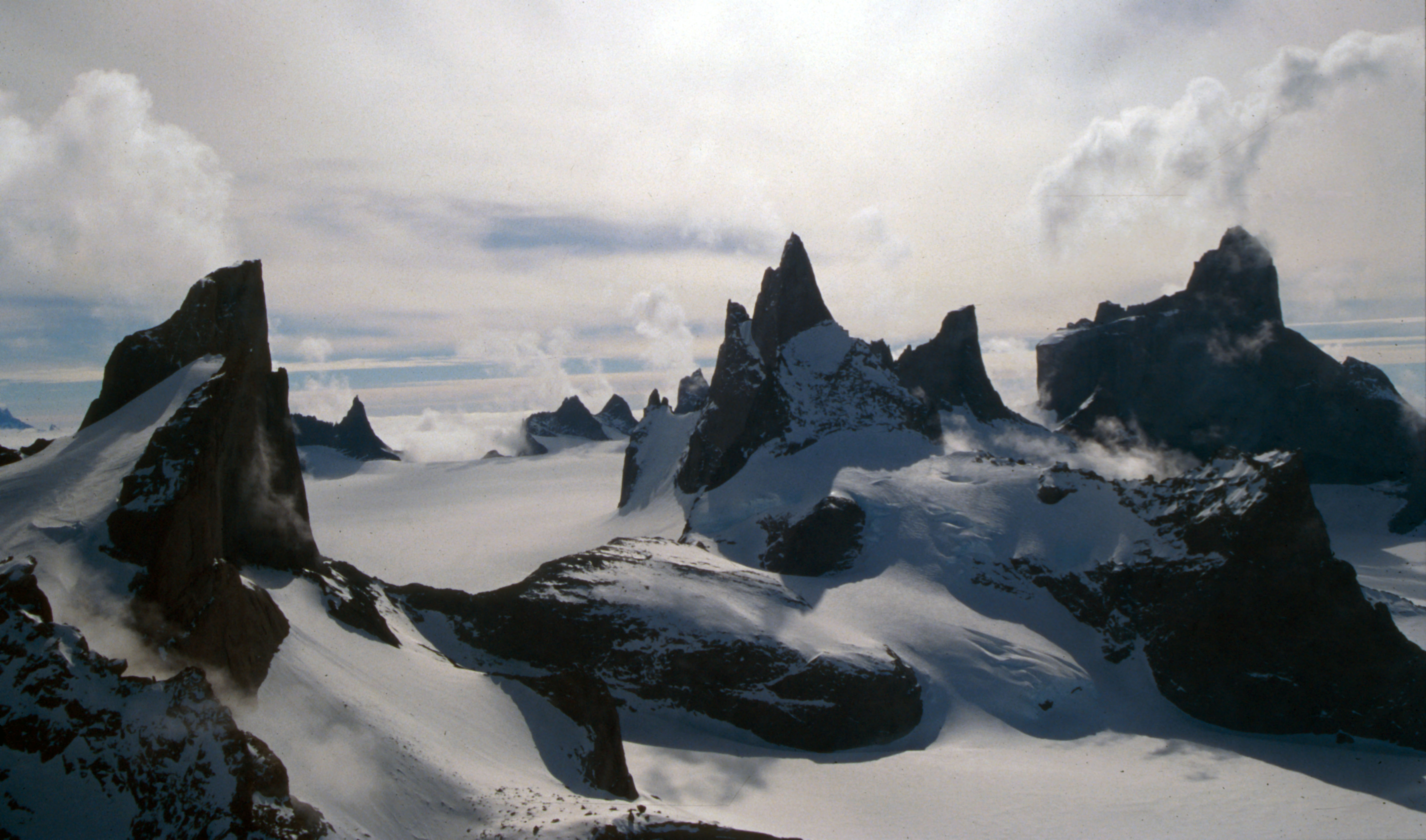|
Styrbordsknattane Peaks
Styrbordsknattane Peaks () is a cluster of small peaks just north of Kjolrabbane Hills, near the southwest end of Ahlmann Ridge in Queen Maud Land. Mapped by Norwegian cartographers from surveys and air photos by Norwegian-British-Swedish Antarctic Expedition (NBSAE) (1949–52) and named Styrbordsknattane (the starboard peaks). Mountains of Queen Maud Land Princess Martha Coast {{PrincessMarthaCoast-geo-stub ... [...More Info...] [...Related Items...] OR: [Wikipedia] [Google] [Baidu] |
Ahlmann Ridge
Ahlmann Ridge, also known as Ahlmannryggen, is a broad, mainly ice-covered ridge, about long, surmounted by scattered, low peaks. It rises between Schytt Glacier and Jutulstraumen Glacier and extends from Borg Massif northward to Fimbul Ice Shelf in Queen Maud Land. The area was first photographed from aircraft of the Third German Antarctic Expedition (1938–39) and peaks in this vicinity were roughly plotted. The Stein Nunataks and Witte Peaks, named by the German Antarctic Expedition, appear to coincide with the northeast part of the Ahlmann Ridge. The feature was mapped in detail from surveys and air photos by the Norwegian-British-Swedish Antarctic Expedition (NBSAE) (1949–1952) and air photos by the Norwegian expedition (1958–59). Named for Hans Wilhelmsson Ahlmann, chairman of the Swedish committee for the NBSAE. Istindhalsen Saddle is an ice saddle between Istind Peak and the Grunehogna Peaks on the Ahlmann Ridge. Like the ridge, it was mapped by the NBSAE and the Nor ... [...More Info...] [...Related Items...] OR: [Wikipedia] [Google] [Baidu] |
Queen Maud Land
Queen Maud Land ( no, Dronning Maud Land) is a roughly region of Antarctica claimed by Norway as a dependent territory. It borders the claimed British Antarctic Territory 20° west and the Australian Antarctic Territory 45° east. In addition, a small unclaimed area from 1939 was annexed in June 2015. Positioned in East Antarctica, it makes out about one-fifth of the continent, and is named after the Norwegian queen Maud of Wales (1869–1938). In 1930, the Norwegian Hjalmar Riiser-Larsen was the first person known to have set foot in the territory. On 14 January 1939, the territory was claimed by Norway. On 23 June 1961, Queen Maud Land became part of the Antarctic Treaty System, making it a demilitarised zone. It is one of two Antarctic claims made by Norway, the other being Peter I Island. They are administered by the Polar Affairs Department of the Norwegian Ministry of Justice and Public Security in Oslo. Most of the territory is covered by the east Antarctic ic ... [...More Info...] [...Related Items...] OR: [Wikipedia] [Google] [Baidu] |
Mountains Of Queen Maud Land
A mountain is an elevated portion of the Earth's crust, generally with steep sides that show significant exposed bedrock. Although definitions vary, a mountain may differ from a plateau in having a limited summit area, and is usually higher than a hill, typically rising at least 300 metres (1,000 feet) above the surrounding land. A few mountains are isolated summits, but most occur in mountain ranges. Mountains are formed through tectonic forces, erosion, or volcanism, which act on time scales of up to tens of millions of years. Once mountain building ceases, mountains are slowly leveled through the action of weathering, through slumping and other forms of mass wasting, as well as through erosion by rivers and glaciers. High elevations on mountains produce colder climates than at sea level at similar latitude. These colder climates strongly affect the ecosystems of mountains: different elevations have different plants and animals. Because of the less hospitable terrain ... [...More Info...] [...Related Items...] OR: [Wikipedia] [Google] [Baidu] |

